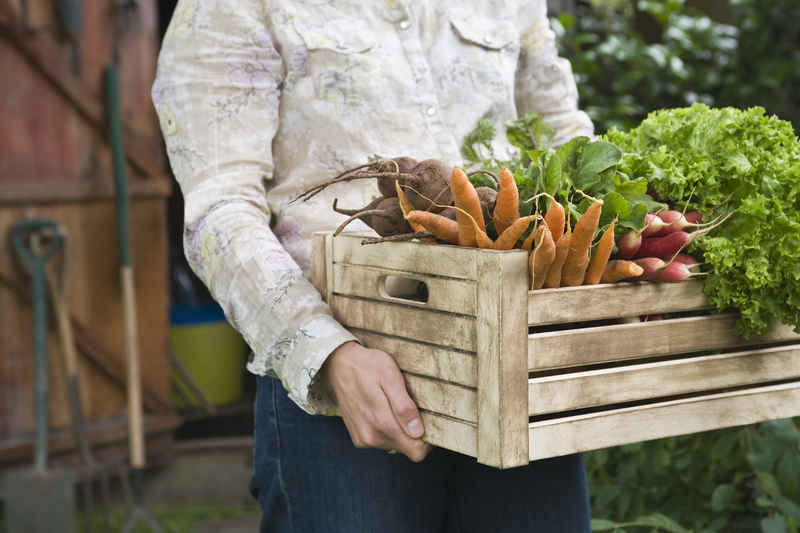Guide to Weatherproofing Your Garden with Ease
Posted on 17/06/2025
Guide to Weatherproofing Your Garden with Ease
Is unpredictable weather threatening the health and beauty of your beloved garden? Learn how to easily weatherproof your outdoor space for every season with our comprehensive, step-by-step guide to garden weatherproofing. From protecting delicate plants to fortifying garden structures, we've covered it all for a lush, resilient garden year-round.
Why Weatherproofing Your Garden Matters
Weatherproofing your garden is no longer just an option--it's a necessity for every gardener who wants thriving plants and a beautiful landscape through changing seasons. Whether it's torrential rain, blistering heat, heavy frost, or gusty winds, unpredictable climate conditions can wreak havoc on your garden.
Garden weatherproofing involves implementing practical protective measures to guard your plants, soil, and structures from severe weather, thus ensuring long-term sustainability and minimizing expensive damages.

The Key Elements of Weatherproofing Your Garden
- Protection from Excessive Water - Preventing waterlogging and root rot.
- Shielding from Harsh Sunlight - Avoiding leaf scorch and desiccation.
- Insulating Against Frost and Cold - Safeguarding sensitive plants from freezing temperatures.
- Defending Against Wind Damage - Stabilizing plants and structures.
- Preserving Soil Health - Preventing erosion and maintaining nutrients.
- Structural Integrity - Weatherproofing fences, sheds, and other garden features.
1. Choosing Weatherproof Plants for a Resilient Garden
The foundation of weatherproofing for gardens starts with your plant selection. Opting for weather-resistant varieties makes the rest of your job easier. Consider native species, as they're naturally adapted to your local environment.
Recommended Weather-Resilient Plants
- Lavender - Tolerant to drought and wind.
- Hostas - Survive through frost, shade, and heavy rain.
- Ornamental Grasses - Handle high winds and variable conditions.
- Russian Sage - Thrives in sun and poor soil.
- Boxwood Shrubs - Versatile evergreen hedges for year-round structure.
- Daylilies - Strong against both drought and heavy precipitation.
Tip: Mix hardy varieties with some delicate species and employ added protection, minimizing risk and maximizing garden diversity.
2. Mulching: An All-Weather Garden Protection
Mulching is one of the easiest methods for weatherproofing your garden. Mulch acts as a protective barrier against the elements, conserving soil moisture, maintaining temperature, and suppressing weeds.
Benefits of Mulching for Weatherproofing
- Retains moisture during hot, dry spells.
- Insulates plant roots from extreme temperatures.
- Reduces soil erosion caused by heavy rains.
- Prevents compaction from frequent rainfall.
- Adds nutrients to the soil as it breaks down.
Top Mulch Materials to Consider
- Wood chips
- Bark
- Straw
- Compost
- Gravel or pebbles (for paths and drought-prone areas)
Ensure a 2-3 inch layer is spread evenly, but avoid direct mulch contact with stems to prevent rot.
3. Installing Windbreaks: How to Weatherproof Against Storms
Strong winds can uproot plants, damage garden structures, and strip away topsoil. By installing effective windbreaks, you can create a safe environment for your plants.
Types of Windbreaks for Garden Weatherproofing
- Hedges (e.g., Privet or Leylandii)
- Fencing (wooden, lattice, trellis with climbing plants)
- Temporary barriers (burlap screens, portable panels)
- Shrub borders for layered protection
Tip: Stagger planting and structures to slow and filter wind, rather than block it completely, which could cause turbulence.
4. Managing Excess Moisture and Flooding
Weatherproofing your garden against rain is vital in regions prone to heavy precipitation or flash floods. Poor drainage can suffocate roots, promote diseases, and wash away valuable soil nutrients.
Drainage Solutions for a Weatherproof Garden
- Raised beds: Elevate plant roots above soggy ground.
- French drains: Channel excess water away using gravel-filled trenches.
- Pervious pavers: Use for paths and patios to allow water seepage and reduce runoff.
- Rain gardens: Collect and filter stormwater with deep-rooted, moisture-loving plants.
Routine soil aeration and addition of organic matter improve natural drainage, supporting weatherproof gardens over time.
5. Shielding Plants from Intense Sun and Heat
Excessive sunlight and high temperatures can lead to leaf scorch, dehydration, and stunted growth. Effective weatherproofing for gardens must involve protection from summer heatwaves.
Ways to Protect Garden Plants from Heat
- Install shade cloths or netting over sensitive areas.
- Plant taller shrubs or trees for natural shade.
- Group containers together to reduce evaporation.
- Water in early morning or evening to reduce loss.
- Use reflective mulch (straw, light pebbles) to deflect sunlight.
Avoid shallow watering, which can further stress plants during heatwaves.
6. Insulating Against Frost and Extreme Cold
Frost and freezing temperatures pose serious threats to both new and established gardens. The key to weatherproofing your garden against cold is anticipating changes and applying timely protection.
Essential Frost-Proofing Techniques
- Use garden fleece, hessian, or frost blankets over crops and ornamentals.
- Mulch generously around the base of plants in autumn.
- Move potted plants indoors or into protected areas like greenhouses or sheds.
- Cloche structures and cold frames for vegetable beds.
- Position tender plants near walls, which radiate heat overnight.
Pro Tip: Label frost-sensitive plants and plan for emergency covers or relocation before the first cold snap.
7. Maintaining Strong, Weatherproof Garden Structures
From sheds and greenhouses to fences and decks, garden structures also need to withstand the ravages of the elements for ongoing garden weatherproofing.
Weatherproofing Structures Checklist
- Use rot-resistant timber or apply regular wood preservative.
- Seal joints and gaps on greenhouses, sheds, and storage units.
- Paint or varnish surfaces with weatherproof coatings.
- Install guttering and downspouts to divert water.
- Stabilize fencing with concrete posts or anchors for heavy wind.
Regular inspection and quick repairs can extend the lifespan of your investment, keeping your garden secure through any storm.
8. Smart Gardening: Technological Aids for Garden Weatherproofing
Thanks to modern advancements, weatherproofing your garden can be easier with the aid of technology. Innovative gadgets and apps help you monitor, predict, and respond to the weather, ensuring timely intervention.
Useful Tools for Smart Garden Weatherproofing
- Soil moisture meters for precise watering.
- Automatic irrigation systems with built-in rain and freeze sensors.
- Weather apps and stations for forecasting and warnings.
- Frost alarms to remotely alert you to temperature drops.
- Smart shade systems that adjust based on sunlight intensity.
Adapt technology to your needs for a truly weatherproof garden that thrives with minimal supervision.
9. Regular Care: The Secret to Ongoing Weatherproofing Success
No matter how well you plan, ongoing care is key to keeping your garden weatherproofed. Regular maintenance helps you catch issues early, reducing damage and expense.
- Check structures, plants, and mulch after each major weather event.
- Clear debris and fallen branches to prevent disease.
- Replace or reinforce damaged covers and supports promptly.
- Rotate seasonal protection strategies as necessary.
Remember, the best garden weatherproofing is proactive and adaptable. Customize your efforts based on local climate, garden layout, and plant needs for optimal results.
Conclusion: Enjoying a Garden That Flourishes in Any Weather
Weatherproofing your garden with ease is all about planning, protection, and ongoing attention. By implementing the right combination of plant choices, mulching, windbreaks, drainage, heat and frost protection, and structural care, you'll ensure your outdoor sanctuary is ready to handle anything nature throws at it.
Take advantage of modern tools and stay vigilant with regular care for a garden that is not just survivable, but truly thrives all year round.

Frequently Asked Questions: Weatherproofing Your Garden
Q1: What is the fastest way to weatherproof my garden?
A: The quickest improvements are mulching, installing temporary windbreaks, and covering delicate plants with fleece or cloches in anticipation of bad weather.
Q2: Can I weatherproof my garden on a budget?
A: Absolutely! Use recycled materials for barriers, homemade compost for mulch, and select resilient native plants. Focus on proactive maintenance to save on costly repairs.
Q3: How often should I inspect and update my weatherproofing measures?
A: Check your garden and structures after every major weather event and at the change of each season. Regular attention ensures top performance of your weatherproofing strategies.
Start Weatherproofing Your Garden Today
There's no better time than now to protect your outdoor oasis. With this ultimate guide to garden weatherproofing, you're equipped with practical, easy-to-follow steps for weatherproofing your garden with ease. Implement these strategies, and enjoy a beautiful, resilient landscape year after year.

